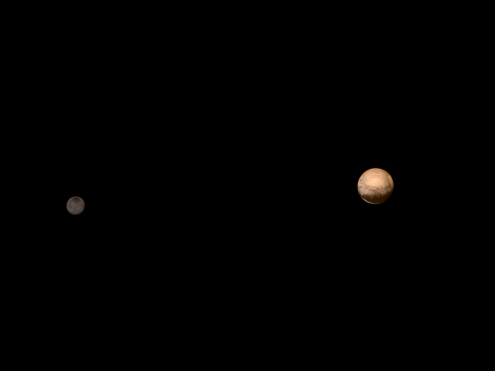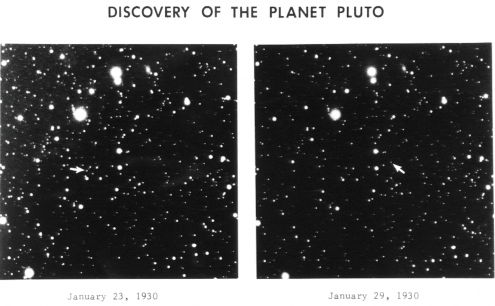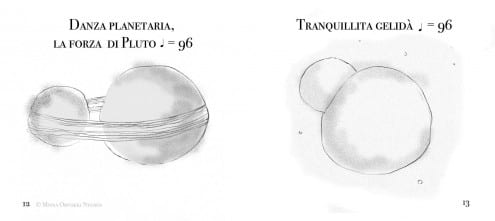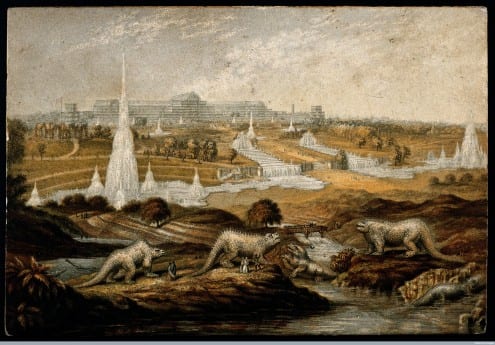Pluto and Charon: A planetary waltz
By ucrhmon, on 14 July 2015
NASA’s New Horizons probe is flying past Pluto today, after years of travel. It is the first ever probe to visit the Pluto system. Here, Minna Orvokki Nygren (UCL Science & Technology Studies) describes a unique art-science collaboration commissioned by UCL & Birkbeck’s Centre for Planetary Sciences to celebrate the event.
Pluto and Charon – A Planetary Waltz was composed in collaboration between composers Catherine Kontz and Minna Orvokki Nygren. The work was commissioned by the Centre for Planetary Sciences UCL/Birkbeck (CPS) and it received its premiere on the 24th of June 2015 at An Evening with the Planets event at the UCL by pianists Valentina Pravodelov and Kerry Yong.
The main organiser of the event, Professor Steve Miller’s support and enthusiasm towards the project were crucial in realising this new work.
The piece was inspired by two photographic plates that led to the discovery of Pluto in 1930 by amateur astronomer Clyde W. Tombaugh.
These plates were used to devise the overall form for the musical work. The distance the bodies travelled across the sky and their relation to other bodies was reflected in the music. When seemingly further away from other celestial bodies, the warped “waltz” of Pluto and Charon, written in 5/4 time, takes over with its prominent bass line and thick chords.
A key aspect of the composition is its gestural dimension which the pianists take on during performance, such as switching seats with each other as in an “orbital ballet,” or the use of custom planetary mallets applied to the piano interior marking off specific movements in the piece.
Other features, such as the size, temperature, consistency and albedo of the bodies were also part of the compositional process. The dwarf planet Pluto being approximately twice the size of Charon is given a more powerful and majestic voice in the work, while its counterpart Charon’s music is lighter, slower and mysterious. The Kuiper belt’s chilly conditions are reflected in the piece by combining extremely high and low pitches of the piano, and giving them an ethereal resonance through the use of distinct pedalling.
An illustrated score of Pluto and Charon was created to give the audience an opportunity to follow the movement of the bodies and the musical piece.
Related links
 Close
Close









